The Cool Physics of 7 Classic Toys
Intro

Compared with the allure of video games, the classic toys of yore may seem boring to today's kids. But in fact, they aren't quite as mundane as they seem: Many of these toys embody important physical concepts, and playing with them helps children develop an intuitive understanding of the world around them something that cannot be gleaned from the virtual worlds of modern gaming.
To learn the underlying physics of your favorite classic toys, read on.
Spinning tops
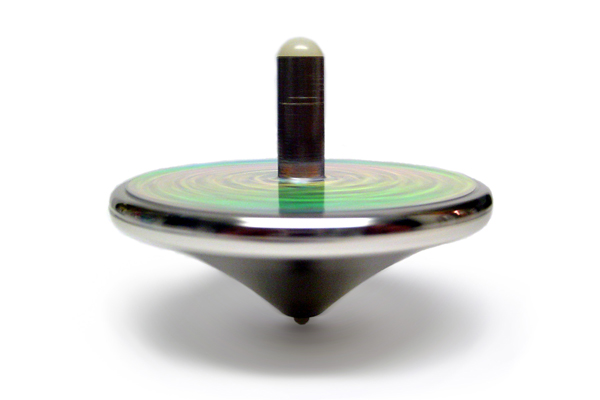
The spinning top, a toy found across many of the world's cultures and even among ancient archaeological ruins, lays bare some profound physical principles. The first is the conservation of angular momentum, the law that dictates that, in the absence of external influences, something spinning must keep spinning. Because a top balances upon a tiny point, it experiences a minimal amount of friction with the surface below it, and thus continues spinning for a delightfully long time, demonstrating the law.
But as friction eventually slows the top, it becomes unstable and starts to wobble, leading to the demonstration of another principle, called "precession." When the top wobbles, its axis of rotation the invisible line running vertically through its center tips sideways, making an angle with the table.
This angle allows the force of gravity to exert a "torque" on the top, putting additional spin on it, and this causes it to swing (or precess) outward in an arc, still spinning as it does so. In an effort to conserve its total angular momentum, the top precesses faster the slower it spins; this explains why tops typically lurch outward just as friction brings their spinning to a stop.
Plasma lamps
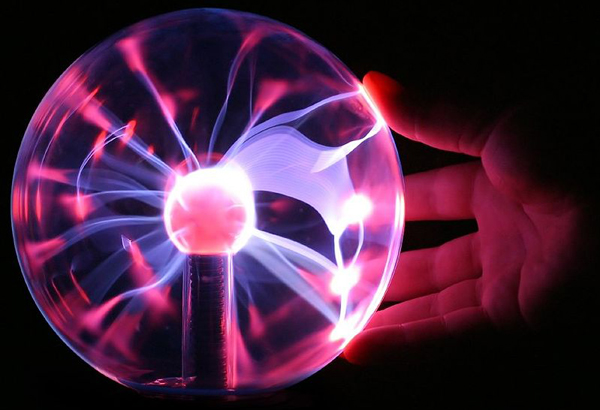
Plasma lamps (or globes) are beautiful visual displays of a very strange variety of matter.
These clear glass orbs are filled with a mixture of non-reactive gases such as helium, neon and krypton kept at less than one-hundredth the pressure of the outside air. The smaller sphere at the lamp's center is an electrode an electrical conductor that is used to transfer electricity from a circuit to a surrounding vacuum. When the lamp is plugged in, a high-frequency electric current flows into the electrode, and from there, passes to the gaseous atoms surrounding it. The current ionizes the atoms, giving them an electric charge and simultaneously causing them to emit flashes of light. An ionized gas is called a plasma.
Because electrons try to flow as far from one another as possible (repelled by each other's negative charges), they shoot outward from the central electrode in every direction toward the outer glass orb. Their escape routes are the plasma filaments visible in the lamps.
Placing your hand near the glass alters the electric field that exists between the central electrode and glass orb, effectively strengthens the force that draws electrons outward. This is why a plasma filament will seem to be attracted to your hand when you touch the ball. Fortunately, commercial plasma lamps are low-power enough that it doesn't hurt when the electric current passes along the filament, through the glass and into your hand.
Slinky
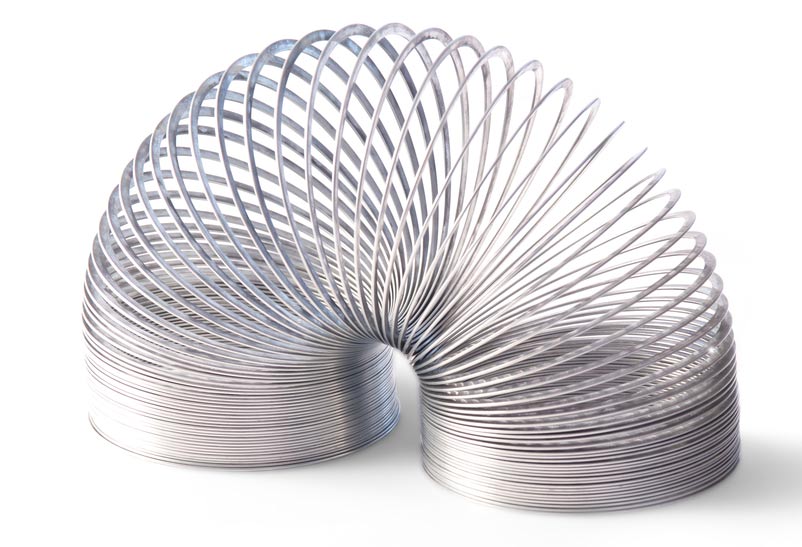
As demonstrated by University of Sydney physics professor Rod Cross in the above video, a classic Slinky toy exhibits some truly startling physics. When you hold up a Slinky, then let go, the bottom remains stationery until the rest of the coil has collapsed down on top of it. It seems to hover in the air, defying the laws of physics, before finally falling to the ground with the rest of the coil but in fact this behavior makes perfect physical sense.
"The simplest explanation is that the bottom end is sitting there minding its own business, with gravity pulling it down, and tension pulling it up equal and opposite forces," Cross said. "No motion at the bottom end, until the bottom end gets the information that the tension has changed. And it takes time for that information to propagate down through the Slinky."
In short, a compression wave, which carries information about the disappearance of the upward force, has to travel down the Slinky to the bottom end before that end "knows" that the Slinky has been dropped, and that it should fall.
What would really be physics-defying is if the bottom end of the Slinky were to fall the instant you let go of the top. This sort of "action-at-a-distance" never happens in nature.
Drinking birds

In a famous episode of "The Simpsons," Homer sets up a drinking bird so that it will press the Y key (for "yes") on his computer keyboard, doing his job for him while he goes out to see a movie. A clever plot driver, but not realistic: The presence of a cup of water is crucial to a drinking bird's continued motion.
The toy is a simple "heat engine" that converts heat energy derived from water into mechanical work.
The felt tip of the bird's beak must first be dipped in water. Inside, the glass ball of the bird's head is filled with vapor that has evaporated off from a liquid usually a chemical compound called dichloromethane that fills its lower body. When the bird's beak exits the water, the water starts to evaporate off of it. Evaporation lowers the temperature of the bird's head, causing some of the dichloromethane vapor inside to condense. As these vapor molecules move closer together, the pressure in the head lowers, and this draws liquid in the toy's higher-pressure base up the neck. Liquid flows upward, causing the bird to become top heavy; it oscillates back and forth and eventually tips over (rewetting the bird's beak).
Next, because the bottom end of the neck tube is at a higher elevation than the surface of the liquid, this causes a bubble of vapor to move up the tube, displacing liquid as it goes. Liquid flows back to the bottom bulb, and its shifting weight restores the bird to its vertical position.The process then starts over. The bird will continue cycling through these steps as long as there is enough water in the glass to re-wet the bird's beak each time it "drinks."
Model rockets
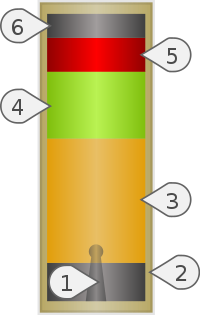
Want your kid to become a rocket scientist? Get them started now with a model rocket, which employs the same basic mechanisms as a real rocket. These easy-to-operate toys can zoom to an altitude of more than 1000 feet (300 meters), leaving a streak of smoke behind them, and then, just as they peak, deploy a parachute and drift back to Earth, to be retrieved and fired up again. But how do they work?
It's all about the order in which different caches of fuel inside the rocket ignite. First, the person firing the rocket lights an electric "match" that is threaded through a nozzle (1) in the bottom (2) of the rocket engine. The match ignites a propellant in the rocket's combustion chamber (3). The propellant (typically some sort of black powder, a chemical explosive containing sulfur, charcoal and potassium nitrate) combusts turns into a hot gas and this spews out of the nozzle. Newton's first law holds that every action has an equal and opposite reaction; thus, the gas shooting downward propels the rocket skyward.
Magnets

Magnetism: pretty weird, huh? So what causes it?
Jearl Walker, a physics professor at Cleveland State University and coauthor of the widely used textbook "Fundamentals of Physics" (Wiley, 8th Edition 2007), explains that magnetic fields naturally radiate outward from the electrically charged particles that make up atoms especially electrons.
Normally in matter, the magnetic fields of electrons point in different directions, canceling each other out. (This is why the electrons in your body don't cause you to stick to your fridge when you walk by it.) But when the magnetic fields of all the electrons in an object align in the same direction, as occurs in many metals (and, obviously, in magnets), a net magnetic field is generated. This exerts a force on other magnetic objects, either attracting or repelling them depending on the direction of their own magnetic fields.
Unfortunately, trying to understand magnetism on a deeper level is essentially impossible. Though physicists have come up with a theory called "quantum mechanics," a body of equations that very accurately represents the behavior of particles (including their magnetism), there's no way to intuitively understand what the theory really means... not yet, at least. [The Mysterious Physics of 7 Everyday Things ]
Physicists wonder: Why do particles radiate magnetic fields, what are magnetic fields, and why do they always align between two points, giving magnets their north and south poles? "We just observe that when you make a charged particle move, it creates a magnetic field and two poles. We don't really know why. It's just a feature of the universe, and the mathematical explanations are just attempts of getting through the 'homework assignment' of nature and getting the answers," Walker told Life's Little Mysteries.
Potato batteries
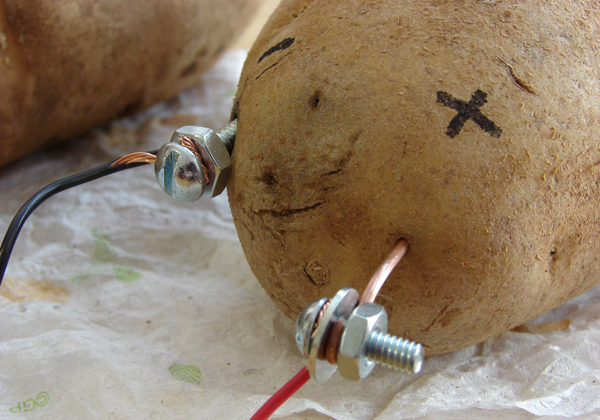
Building a potato (or lemon or apple) battery reveals a bit about the inner workings of electrical circuits. To do this simple science experiment, you insert two different metallic objects often a galvanized (zinc-coated) nail and a copper penny into the potato, and connect wires to each object with alligator clips. These wires can be attached either to the two terminals of a multimeter (which measures a circuit's voltage) or to something like a digital clock or lightbulb. (It may take two or three potatoes wired in series to generate enough voltage to power those devices.)
The potato acts like a battery, generating a current of electrons that flow through the wire. This happens because acid in the potato induces a chemical change in the zinc that coats the nail. The acid acts as an "electrolyte," ionizing the zinc atoms by stripping two electrons from each of them and leaving them positively charged. Those electrons are conducted away from the zinc ions through the wire and through whatever devices lie along the circuit and end up at the copper penny. From there, they join up with positive hydrogen ions in the potato starch that have been repelled there by the nearby zinc ions. The movement of these electrons is enough to power a toy clock or light bulb.
Follow Natalie Wolchover on Twitter @nattyover. Follow Life's Little Mysteries on Twitter @llmysteries, then join us on Facebook.
Sign up for the Live Science daily newsletter now
Get the world’s most fascinating discoveries delivered straight to your inbox.
Natalie Wolchover was a staff writer for Live Science from 2010 to 2012 and is currently a senior physics writer and editor for Quanta Magazine. She holds a bachelor's degree in physics from Tufts University and has studied physics at the University of California, Berkeley. Along with the staff of Quanta, Wolchover won the 2022 Pulitzer Prize for explanatory writing for her work on the building of the James Webb Space Telescope. Her work has also appeared in the The Best American Science and Nature Writing and The Best Writing on Mathematics, Nature, The New Yorker and Popular Science. She was the 2016 winner of the Evert Clark/Seth Payne Award, an annual prize for young science journalists, as well as the winner of the 2017 Science Communication Award for the American Institute of Physics.











